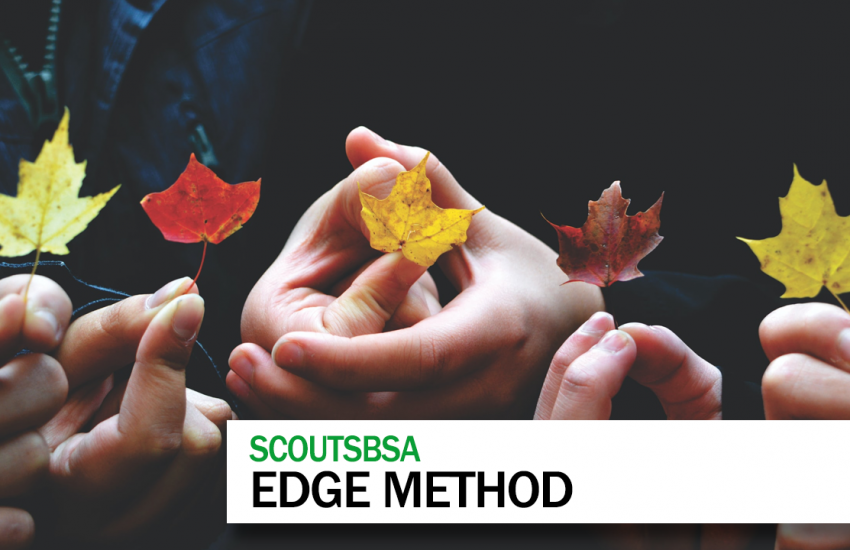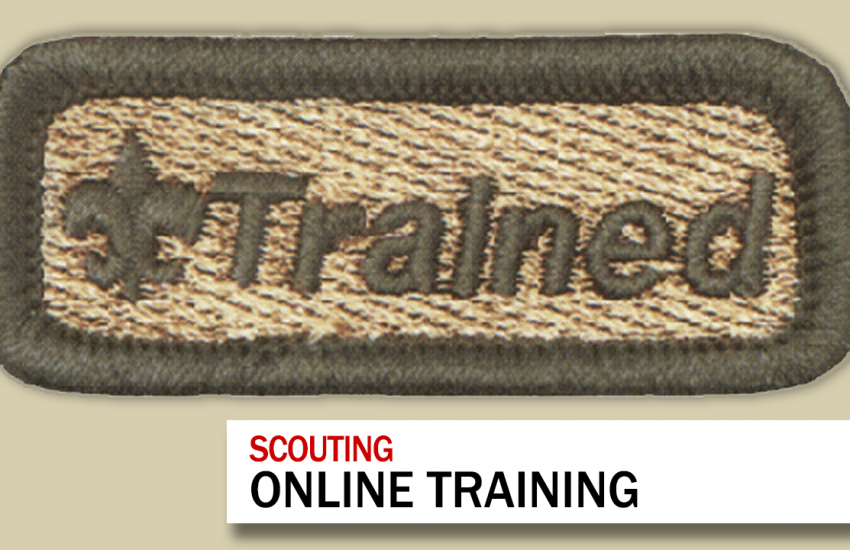The edge method is the preferred method of teaching skills in the ScoutsBSA program. Explain, Demonstrate, Guide, Enable – E.D.G.E.
Show Notes:
- The Teaching EDGE: The best way to teach someone a new skill
- Why the EDGE method works for more than just Boy Scouts
- New BSA Guide to Advancement better for EDGE method
Transcript:
The edge method is the preferred method of teaching skills in the ScoutsBSA program. EDGE centers around a key principle in training, that teaching is not effective unless learning takes place. To do this, the BSA uses the Training EDGE model, a four-step training method for teaching a skill.
Lets take a look at the parts of EDGE and then investigate each part individually.
EDGE is an acronym for Explain, Demonstrate, Guide, and Enable.
Explain: Explain what you are going to teach and why. The why is important because it provides scouts with the context around a particular concept.
Tell them the steps involved. Visual aids can be helpful for this step. But it’s not enough to simply explain it, you want to put it into some kind of context.
For example, a taut line is a helpful knot, but out of context its hard to see the value.
A taut line can be slipped to tighten or loosen a line, then holds fast under load. It can be useful for lines under load, meaning if something is pulling on it. A taut line is useful for when you are setting up guide lines from your tent, where you wrap it around a stake and adjust it to keep it from sagging, and then if it needs to be tightened you can easily adjust it.
Another use is for a clothes line running it from one tree or post to another, and adjusting it to tighten it.
As part of understanding, sometimes it’s important to ask questions, this keeps them engaged as well and to make sure they understand what you are teaching.
The next step is to demonstrate: Demonstrate the steps using an example or actual materials. Describe what you are doing. Go at a slow pace so each step in the process is clearly shown.
Continuing with my example of a taut line, setting up a clothes line and then putting some weight on it, like a towel, to show that it works and does not slip reinforces the skill you are teaching.
Next up is Guide: Guide learners as they go through the exercise for the first time. Provide the materials and tools needed to complete the exercise. A learner must do a new activity at least twice. That’s how real learning takes place. Repetition is essential. Let them practice the skills.
As the scout is performing the activity, it’s ok to help them by pointing to things, or even moving their hands or fingers to complete the activity successfully. It’s ok that they are not doing it by themselves at this point. The idea is guide them as the name says, through the process, and then have them do it again. Hopefully the second and third time you are observing more that leading their hands.
At this point it’s good to circle back around to reinforce what they have already learned. Asking them why the skill is important and then have them try and move to the next step, which is to enable.
Enable learners by letting them perform the skill themselves without intervention.
Essentially, watch them do it, and correct if necessary. In our example of setting up a clothes line, have them set one up with two taut lines at each end. Then put the towel on it complete the cycle. Have them try and adjust each taut line, and then remove it.
It’s important to encourage them to keep trying until they master the skill, it’s ok to have them do it multiple times.
One of the reasons we use the EDGE method with scouts is to have them teach the skill, and not have the adults doing the teaching every time.
As someone teaches something, their knowledge and skill for the task gets stronger, as it uses different parts of your brain to teach something rather than just doing something.
If you’re like me and have been using a knot like a taut line over the years, you tend to do it from memory, and your hands just do it on their own. Once you have to slow down and go step by step, you see that you really need to think about it as you’re going along.
That’s why it’s a great thing to encourage, especially with your younger scouts.
But this is what works for us.
Take what you like and leave the rest, and as we say in Woodbadge, feedback is a gift, leave yours below in the comments, with the hope we can all learn together.
I’m Scoutmaster Dave, and this was a little on the EDGE method.




